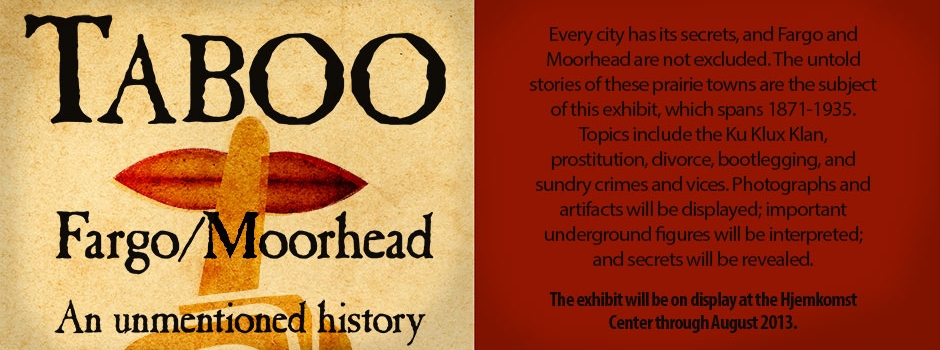Category
Topics
Fraternal Organizations in Fargo and Moorhead
Like much of the nation in 1900, Fargo and Moorhead were smattered with various fraternal orders. As of 1900, both cities combined listed fifty-one fraternal organizations.[1] The Masonic Order was perhaps the most popular order established because of its celebration of Victorian principles in the life of American men. A man’s membership in a Masonic order showed his commitment to masculinity and set him up for succe
Read MoreNorth Dakota Children’s Home Society
In the late 1800’s, it was the practice of the New York Children’s Aid Society to round up homeless children from the streets, and send them west on the train to be distributed to farmers. Sometimes the children ended up in good homes, in other cases they were chosen just for their ability to serve as free labor. Children’s Home Societies were created in towns along the railroad to protect the “orph
Read MoreKu Klux Klan
Klan Background The Ku Klux Klan began in the American South after the Civil War to defy Reconstruction efforts to allow blacks to vote and hold office. It was inactive by the early 1890s, but resurfaced in 1915 when the film Birth of a Nation was released. The film depicted the original KKK as the heroic protector of Southern honor against the horrors of minorities. As the Klan moved beyond the South, it recruited F
Read MoreFargo: the Divorce Capital of the Midwest
While Fargo was still a rough-and-tumble outpost, one commodity became a steady source of income: divorce. Even when lawmakers put a three-month residency requirement in place, a steady stream of unhappy spouses came to Fargo on the Northern Pacific. Hotels were built so they could live and dine in luxury while waiting three months, and lawyers set up shop to help them navigate the legal waters. The waiting period wa
Read MoreProstitution
When houses of prostitution cluster in a city, they form what is commonly called a “red-light district”. “The Hollow,” as it was called in Fargo, had a scarlet glow from the 1880s to the early 20th century. Some “working girls” or prostitutes followed the men building the Northern Pacific Railroad, while others settled along the route. Many of the patrons visited Moorhead’s l
Read MoreBootlegging
Liquor once flowed freely on both sides of the Red River at Fargo and Moorhead, but when North Dakota statehood came, saloons had to be closed by July 1, 1890. Moorhead saloons quickly filled the gap, offering free transportation to Fargoans still needing a lawful drink. That liaison lasted until Clay Countians voted dry in 1915, closing Moorhead’s saloons ahead of national prohibition in 1920. But intoxicants
Read MoreViolent Crime
Crime Overview As railroad construction continued and industry expanded in the late 19th century, the gap between the upper and lower classes grew. With an influx of people looking to work along the tracks, complications arose, leading to an increase in crime. Although the introduction of the Northern Pacific and SPM&M improved economic opportunities, with it came prostitution, alcohol consumption, and conflict.
Read MoreRepurposing Fargo
Fargo has grown immensely and gone through numerous changes in its 142-year history. Growing from just over 2,500 people in 1880 to over 107,000 today and surviving such natural disasters as fires, floods and tornadoes; nothing has been able to stop Fargo from thriving. Fargo’s downtown has always been a thriving business mecca[1] of the Red River Valley and is a key reason Fargo has survived to be the city it is tod
Read MoreTaboo Fargo/Moorhead
NDSU students announce exhibit exploring Fargo-Moorhead’s taboo past. April 18, 2013 Fargo, ND – “Taboo: Fargo-Moorhead” is the subject of an exhibit opening May 9 at the Hjemkomst Center in Moorhead, Minnesota. The exhibit is a project of the spring semester Museum Studies class at NDSU. The unmentioned stories in the history of Cass and Clay counties are the focus of the exhibit, which explores prostitution, bootl
Read MoreFargo Churches: Then and Now
This slideshow features historic photographs of several of the churches of Fargo, accompanied by recent photographs, which allow for side-by-side comparison. The recent photographs were taken by Scott Becklund in 2012. Mr. Becklund attempted to recreate the original location and angle of the archival photographs. Most of the churches retain some of their original character, while some have been demolished. 1. Elim Lu
Read More
